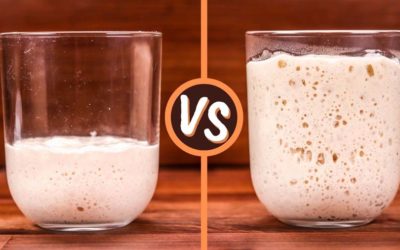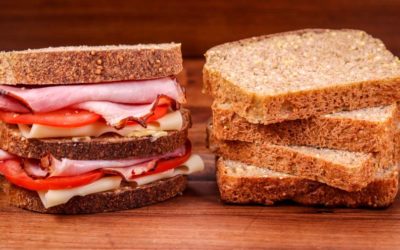Keeping your starter active and happy is important if you want to get good results when making your sourdough bread. Ideally you must feed it every day. Even better if you do it twice a day.
I have been very lazy and keeping my starter in my fridge for ages and neglecting it.
You can safely store a starter in the fridge and just bring it back to life when needed.
While that is a great way of avoiding the commitment of daily feeding it does pose some challenges. If you want to use a starter that has been in the fridge for a while and make a levain with it then you must feed it a few times until it is strong enough. If it has been in the fridge just for a couple of days, then you could get away with only feeding it once, but it has been refrigerated for a longer period of time, then you will have to feed it a few times to make it strong enough.
For getting consistently great results you do have to feed it every day. I feed my starter every 12 hours at a 1:10:10 ratio. Meaning that I use 1g starter and add 10g water and 10g flour. Discarding the excess every time or using it in a recipe.
I also have some sourdough discard recipes in the Sourdough page. There are quite a few recipes that it can be used in like crackers, crumpets, pancakes and many more delicious treats.
You can adjust your feeding schedule to fit around your life. Use colder water to slow it down or keep it in a cooler area, for example. Your starter should not own you.
When it comes to building a levain it is quite straight forward as it is the same process as feeding your starter. To speed up the levain just use a different ratio. 1:2:2 for example – 20g starter, 40g flour, 40g water. This will rise at lot quicker and be ready for use in just a few hours.
Every starter and the conditions in every kitchen are different, so it is up to you to get to know your starter and learn how it reacts.
Make sure you use good water. Bottled or filtered works really well. Salt plays an important part come bread making time. Do not use table salt as it contains anti caking agents which are basically poison.
Tap water can be used, but it does contain chemicals, that is why I suggest filtering or using bottled water. You can also boil water and leave it to cool. There is another method that can be used to disable the chlorine in tap water. Fill up a bowl and leave it it sit uncovered for a day or two.
With so many different methods and ingredients, I always suggest trying what works for you instead of just repeating what I or someone else told you.
Watch the video here



